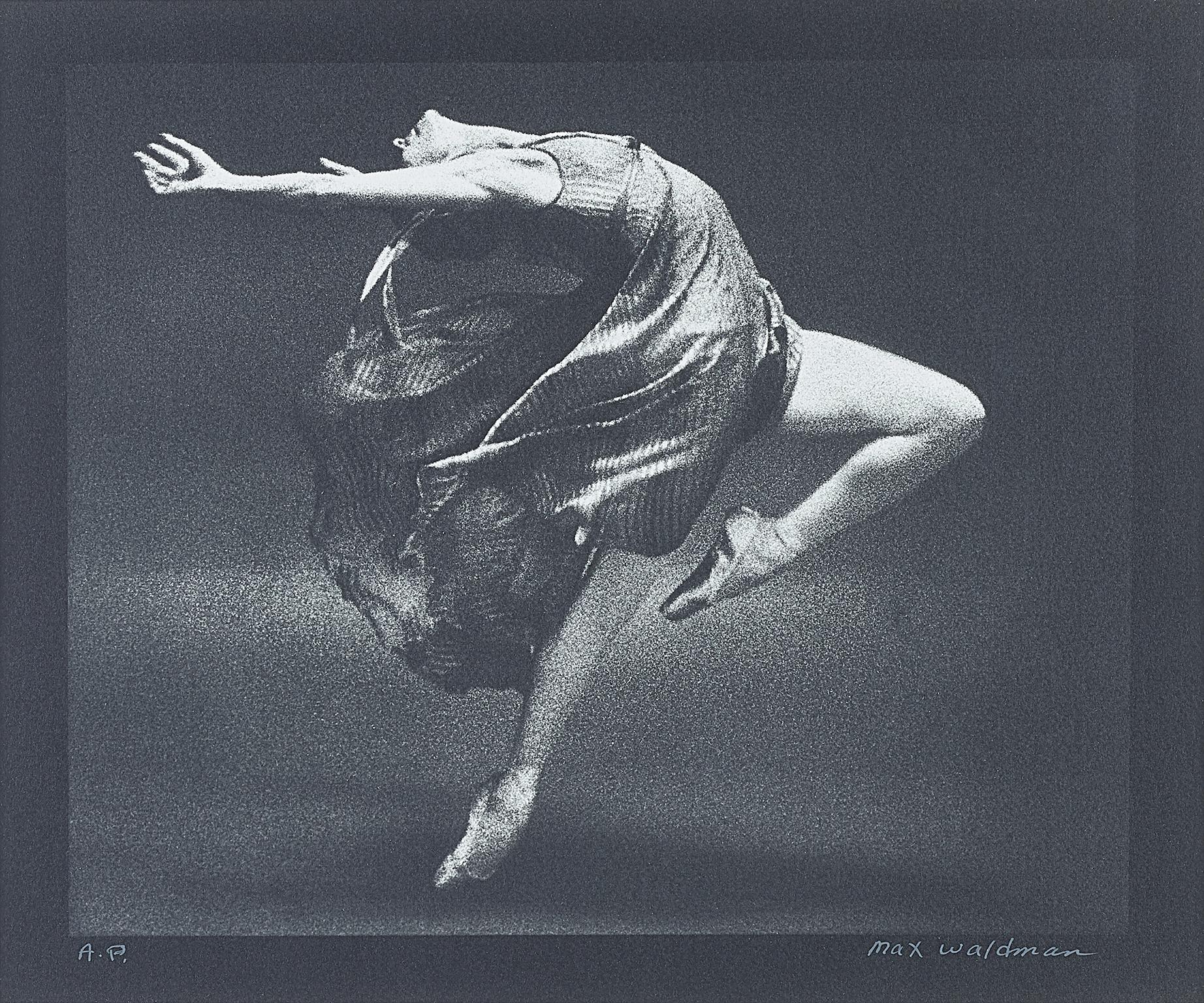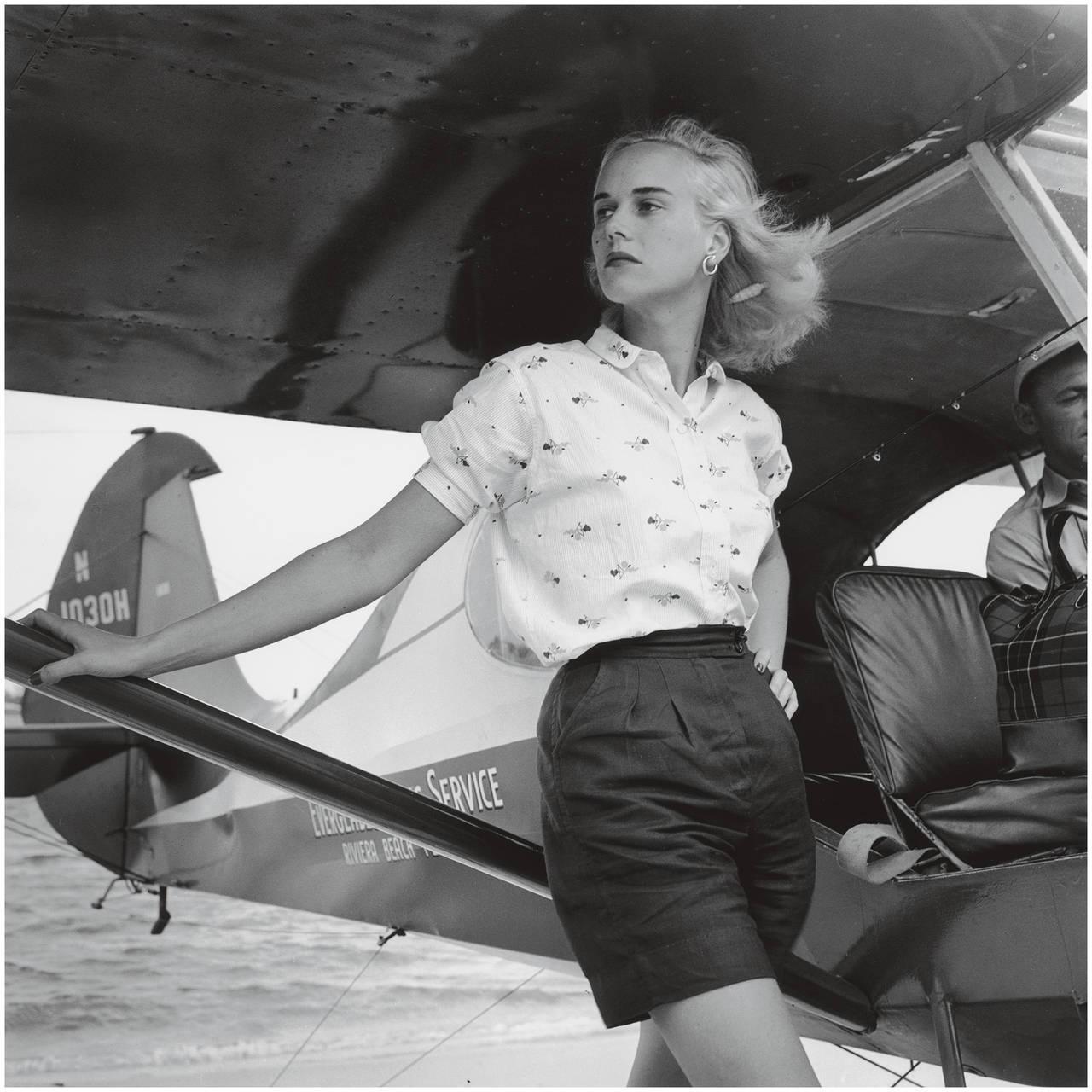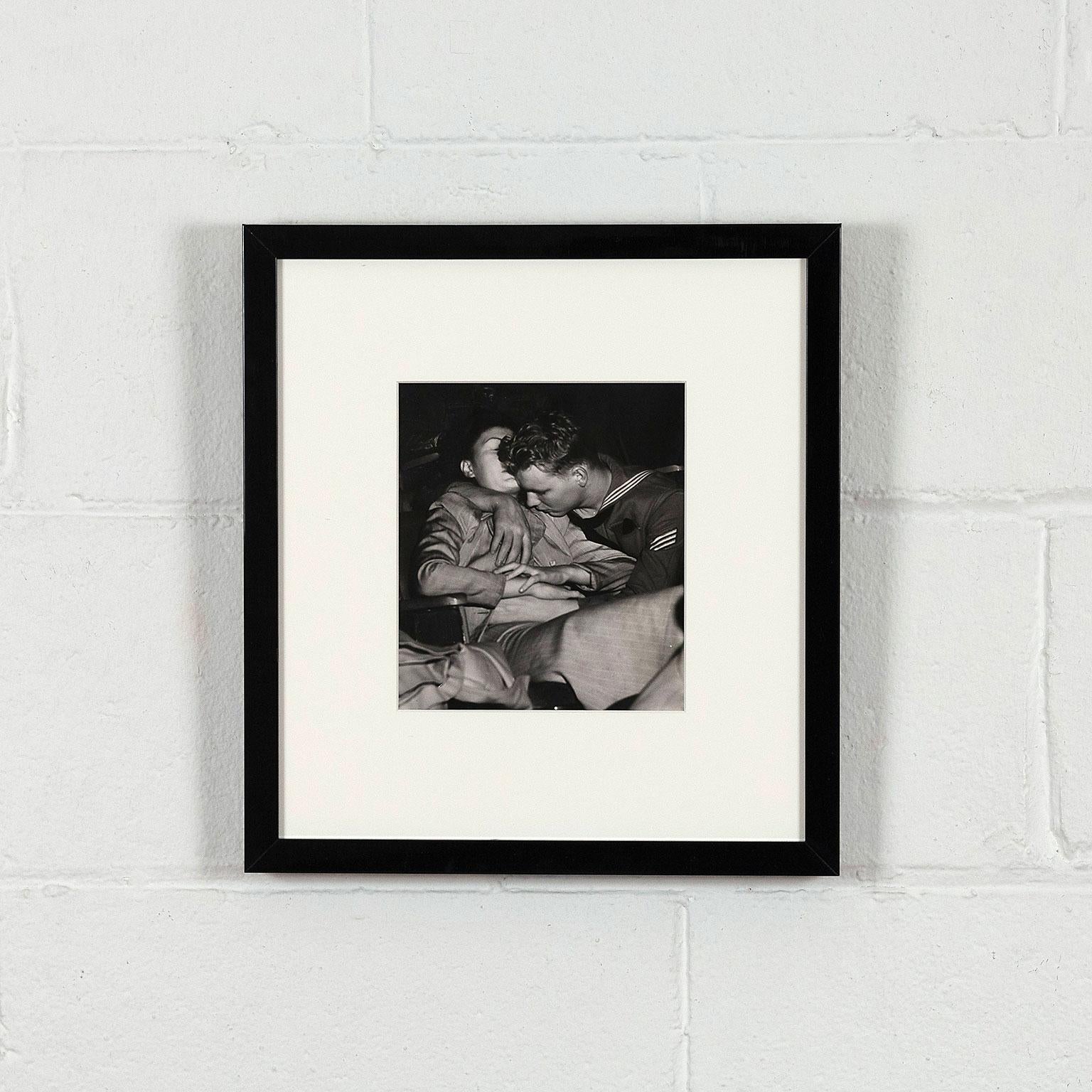Christopher MakosMan with Catca. 1970
ca. 1970
About the Item
- Creator:Christopher Makos (1948, American)
- Creation Year:ca. 1970
- Dimensions:Height: 8.25 in (20.96 cm)Width: 10 in (25.4 cm)
- More Editions & Sizes:noPrice: $4,000
- Medium:
- Movement & Style:
- Period:
- Condition:
- Gallery Location:Wilton Manors, FL
- Reference Number:1stDibs: LU245213030542
Christopher Makos
Christopher Makos, born in 1948, is an American photographer and artist. He spent his adolescence in California and as a young adult, moved to Paris, France, to study architecture. After extensive traveling throughout Europe, Makos became the apprentice of Man Ray, a photographer and close friend of Marcel Duchamp. During the great artist's last birthday celebrations in Italy, the master Surrealist Man Ray took a special interest in Makos and shared many practical insights into his working method as a photographer.
In 1977, Makos burst onto the photography scene with his book, White Trash. This raw, beautiful chronicle of the downtown NYC punk scene, interspersed with portraits of Uptown Boldface names, became a turning point for his career as a photographic journalist. Makos became close friends and collaborated extensively with Andy Warhol, whom he showed how to use his first camera. Warhol dubbed Makos the "most modern photographer in America" and his book, Warhol: A Photographic Memoir, details his extensive travels and friendship with the Pop art superstar. Later, Makos introduced Warhol to the work of both Jean-Michel Basquiat and Keith Haring, connecting the major players of the contemporary art world.
Makos continued to document the New York scene throughout the 1980s using his Interview Magazine "IN" column to present up and coming stars such as Matt Dillon, Christian Slater, Robert Downey Jr. and Tom Ford. Makos then began his long-term love affair with Spain, where he continues to be a regular in Madrid. His portraits of Pedro Almodovar, Agatha Ruiz de la Prada, Bibi Andersen and Miguel Bose helped identify La Movida. Makos has developed his distinctive photographic style to take legendary photographs of the world’s most famous icons, including portraits of Keith Haring, Andy Warhol, Elizabeth Taylor, Salvador Dalí, John Lennon, Tennessee Williams and Mick Jagger. Makos's work has been in the permanent collections of more than 100 museums and major private collections, including those of Malcolm Forbes, Pedro Almodóvar and Gianni Versace.
Christopher Makos’s photos have been the subject of numerous exhibitions both in galleries and museums throughout the United States, Europe and Japan and have appeared in countless magazines and newspapers worldwide. His work has been published in Interview, Rolling Stone, House & Garden, Connoisseur, New York magazine, Esquire, Genre and People, among many others. The beloved portrait of Warhol wrapped in a flag was featured on the front cover of the Spring 1990 issue of the Smithsonian Studies.
Makos’s projects include a book of his SX 70 Polaroids, with an essay by his friend Calvin Klein. Lady Warhol, published in 2010, presents 120 portraits of Andy in various wigs and make-up guises from the 1981 two-day Makos shoot they conceived as an homage to Man Ray's Rrose Sélavy collaboration.
Christopher Makos has truly become a seminal figure in the contemporary art scene in New York — find a collection of his photography today on 1stDibs.
(Biography provided by Arton Contemporary)
- ShippingRetrieving quote...Ships From: Wilton Manors, FL
- Return PolicyA return for this item may be initiated within 7 days of delivery.
- Beauty in the BeastBy J. B. PardoeLocated in Wilton Manors, FLBeautiful vintage photograph by American artist, Dr. J. B. Pardoe. Silver gelatin print, 10. 3/8 x 13 inches. Minor wear at corners, otherwise good condition. Unframed. Studio stamp...Category
1920s Realist Black and White Photography
MaterialsSilver Gelatin
- Galveston (Texas young woman portrait)By Lee FriedlanderLocated in Wilton Manors, FLLee Friedlander (b.1934). Galveston, 1975. Gelatin silver print, 8 1/8 x 12 1/8 inches (image); 11 x 14 inches (sheet). Measures 16.5 x 20 inches framed. Excellent condition with no ...Category
1970s American Realist Black and White Photography
MaterialsSilver Gelatin
- Male Nude Beach StudyLocated in Wilton Manors, FLRoy Dean (1925-20020. Male Nude Study, ca. 1975-80. Origina; period print with artist studio stamp on verso. Print measures 2.25 x 4 3/8 inches; 9 x 12 inches framed. Roy Dean was ...Category
1970s Realist Black and White Photography
MaterialsSilver Gelatin
- Lovers, San Francisco.Located in Wilton Manors, FLFisher Ross. Untitled, ca. 1975-80. Gelatin Silver print, sheet measures 8 x 10 inches; 17 x 21 inches framed. Artist studio stamp on verso. Excellent cond...Category
1970s Realist Black and White Photography
MaterialsSilver Gelatin
- 1970s Fashion editorial photo Turban and FeathersLocated in Wilton Manors, FLKenn Duncan (1928-1986). Woman with Turban and Feathers, ca. 1973. 11 x 14 inches; 12 x 15 inches framed. The print was used for publication in After Dark Magazine. From the estate of William Como, Editor in Chief, After Dark Magazine. Kenneth Duncan was born September 22, 1928, in New Jersey. He began his career as a skater and then a dancer. After breaking his foot and taking a six-week course on photography at a YMCA, he became a photographer. Duncan worked as a principal photographer for After Dark and Dance Magazine. His photographs also regularly appeared in Vogue, Harper's Bazaar, Life, Time, and Newsweek. In addition, he photographed a score of Broadway shows, including Hair, Applause, The Elephant Man, and Sophisticated Ladies and many dance and Broadway stars including Chita Rivera...Category
1970s American Realist Black and White Photography
MaterialsSilver Gelatin
- 1970s Fashion editorial photo Male ModelLocated in Wilton Manors, FLKenn Duncan (1928-1986). Fashion editorial photo of male model Pat Anderson, ca. 1973. 11 x 14 inches; 12 x 15 inches framed. The print was used for publication in After Dark Magazine. From the estate of William Como, Editor in Chief, After Dark Magazine. Kenneth Duncan was born September 22, 1928, in New Jersey. He began his career as a skater and then a dancer. After breaking his foot and taking a six-week course on photography at a YMCA, he became a photographer. Duncan worked as a principal photographer for After Dark and Dance Magazine. His photographs also regularly appeared in Vogue, Harper's Bazaar, Life, Time, and Newsweek. In addition, he photographed a score of Broadway shows, including Hair, Applause, The Elephant Man, and Sophisticated Ladies and many dance and Broadway stars including Chita...Category
1970s American Realist Black and White Photography
MaterialsSilver Gelatin
- "Natalia Makarova " vintage photography. "Serge Lifar "Located in CANNES, FR"Natalia Makarova " is an gelatin print , silver bromide, numbered and signed photograph offered to " serge Lifar " by Max Waldman . Artist proof . Ser...Category
1970s American Modern Black and White Photography
MaterialsSilver Gelatin
- Patsy Pulitzer, Seaplane At Palm BeachBy Slim AaronsLocated in New York, NYPatsy Pulitzer, Seaplane At Palm Beach Chromogenic print, 1955 Estate stamped and hand numbered edition of 150 with certificate of authenticity...Category
1950s American Modern Black and White Photography
MaterialsSilver Gelatin
- Christopher Makos, "Four by Four: Statue of Liberty, " Photo Collage, 1986By Christopher MakosLocated in Long Island City, NYThis collage of gelatin silver prints was created by American photographer Christopher Makos. Makos is well known for his relationships with icons like Andy Warhol, Tennessee William...Category
1980s American Modern Black and White Photography
MaterialsSilver Gelatin
- Weegee "Distortion: Stripes"By WeegeeLocated in Toronto, OntarioInnovative, provocative, inimitable - these are just a few of the words to describe America's boldest photographer. Arthur Fellig, better known as Weegee (1899-1968) was a ground-breaking, successful (and notorious) photojournalist. His images shot on the streets of New York City are iconic and influential. In the 1930s he became the first New York City press photographer to obtain permission to install a police radio in his car. This allowed him to follow the city's first responders and to document their duties; responding to fire, crime, debauchery and of course, murder. By the early 1940s Weegee was experiencing fatigue with crime reportage. Ironically, this was also the point when he finally began experiencing professional validation and acclaim, to the point of being a minor celebrity. Notably in 1941 he was included in The MoMA's seminal "50 Photographs by 50 Photographers" (curated by Edward Steichen). The museum would also acquire five Weegee photographs...Category
1940s American Modern Black and White Photography
MaterialsSilver Gelatin
- Weegee "A Trip to Mars"By WeegeeLocated in Toronto, OntarioWhile many first associate Weegee (aka Arthur Fellig) with New York City crime scenes, perhaps a broader and more consistent theme is that of spectacle and/or urban entertainment. The origins of his nick-name and reputation date back to the 1930s when he became the first New York City press photographer to obtain permission to install a police radio in his car. Following the city's first responders and documenting their duties, Weegee had unprecedented access to New York’s fires, crimes, debaucheries and of course, murders. During the first decade of his career these unflinching urban tragedy or crime images paid Weegee's bills, but as he became more financially independent he was more inspired to pursue photographs on his own agenda. While his oeuvre is vast, Weegee was especially drawn to entertainment: nightlife, circuses, the theatre, showgirls, city thrills, the cinema etc. Some of Weegee's most dynamic and tender (and under-appreciated!) images are related to simply having fun (in a crowd). He was not confined to one neighbourhood or demographic. He captured action, faces and events from Coney Island to the Bowery and Greenwich Village, to Times Square and Harlem. In “A Trip To Mars,” Weegee depicts a multi-generational group crowding around a large telescope...Category
1940s American Modern Black and White Photography
MaterialsSilver Gelatin
- Weegee "Sailor and Girl Kissing"By WeegeeLocated in Toronto, OntarioWeegee (1899-1968) was equally fascinated and inspired by cinema and all of its tangents, from Hollywood movie stars to ordinary civilians going to the movies. While Weegee is typically associated with crime/disaster images, the broad theme of "entertainment" is a major component of his oeuvre. An interesting and provocative sub-genre of his cinema-related work are his images of couples (often heavy-petting) in movie theatres. Recent scholarship has established that many of Weegee's supposed clandestine images were actually staged or arranged with friends or co-operative strangers. Nevertheless, Weegee created these photographs in the dark with an array of clever techniques including infrared film, filtered flashbulb and triangular prism lens. Employed in shots such as this one, the prism lens would allow the artist to “see around corners,” useful at times when his subjects were in compromising locations. These images of kissing couples, Weegee wrote in 1959, were “his best seller, year in and year out.” "Sailor and GIrl at the Movies...Category
1940s American Modern Black and White Photography
MaterialsSilver Gelatin




